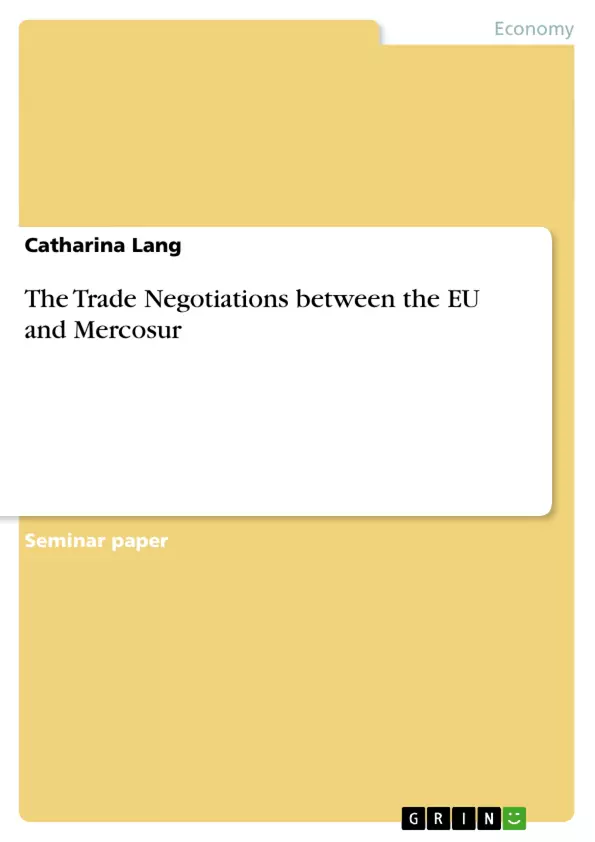During the last two decades, regional trading blocs and intra-regional trade have been gradually built up. Moves towards a liberalisation of international trade have led to the formation of large and increasingly regional trading blocks. Advantages deriving from international trade include political stability and overall growth. The three largest and best-established trading regions worldwide are NAFTA, EU and Asia-Pacific (ASEAN and APEC).
Without being a member or contracting party, the European Union already participated in trade negotiations of GATT, OECD and UN and has also favoured Mercosur’s process of regional integration from its very conception in 1991. Today Mercosur is the world’s fourth largest single market, after the EU, the USA and Japan. Mercosur’s aim to become a real common market forms the main element in the creation of an association between both regions.
This book mainly concentrates on the bilateral negotiations on trade issues between the European Union and Mercosur.
Inhaltsverzeichnis (Table of Contents)
- Introduction
- Brief comparison between the European Union and Mercosur
- EU-Mercosur Trade Relations
- The Interregional Framework Cooperation Agreement
- Negotiations on Trade Issues
- Trade in goods
- Trade in services
- Conclusion and outlook
Zielsetzung und Themenschwerpunkte (Objectives and Key Themes)
This essay aims to provide an analysis of the bilateral trade negotiations between the European Union and Mercosur, focusing on key trade issues and the potential for future cooperation.
- The growth of regional trading blocs and their impact on international trade
- The evolution of trade relations between the EU and Mercosur
- The challenges and opportunities of establishing a closer economic relationship between the two blocs
- The role of the Interregional Framework Cooperation Agreement in promoting trade and investment
- The potential benefits of a free trade agreement between the EU and Mercosur
Zusammenfassung der Kapitel (Chapter Summaries)
- Introduction: This chapter sets the stage for the essay by discussing the rise of regional trading blocs and their significance in the global economy. The chapter highlights the EU's experience in international trade negotiations and its commitment to fostering a stronger relationship with Mercosur.
- Brief comparison between the European Union and Mercosur: This chapter provides a concise overview of the two trading blocs, comparing their economic structures, membership, and integration processes.
- EU-Mercosur Trade Relations: This chapter delves into the history and current state of trade relations between the EU and Mercosur, analyzing the Interregional Framework Cooperation Agreement and the ongoing negotiations on trade issues. It also examines trade in goods and services between the two blocs.
Schlüsselwörter (Keywords)
The key focus of this essay is the examination of trade negotiations between the European Union and Mercosur. This involves key concepts such as regional trading blocs, international trade liberalization, regional integration, and bilateral trade negotiations. The essay analyzes the Interregional Framework Cooperation Agreement, trade in goods and services, and the potential for a free trade agreement between the two blocs.
- Quote paper
- Catharina Lang (Author), 2002, The Trade Negotiations between the EU and Mercosur, Munich, GRIN Verlag, https://www.grin.com/document/18601



